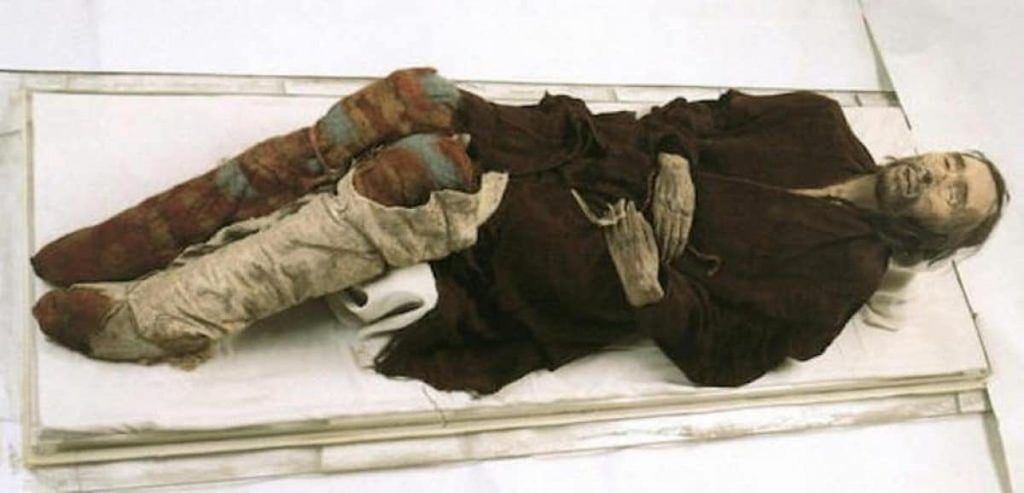The Tarim Mummies or the Mummies of Xinjiang are mysterious mummies that were discovered in the foothills of the Tian Shan Mountains in China. What is so mysterious about them is that some of them date back to roughly 4,000 years ago, a time when it was thought that there were no westerners in that area. However, there must have been, because the Tarim mummies are Caucasian. Not only that, but they wear similar garments and share similar burial practices of some European countries.

The first of the Tarim mummies were discovered by Wang Binghua in 1978. Wang had been searching for ancient settlements along in the northeast of Xinjiang when a local man directed him to Quizilchoqa. It was there that Wang uncovered the first mysterious Tarim mummy. Over time, these mummies were discovered in four different sites in the Tarim Basin area. More than one hundred of them have been uncovered so far.
The Tarim mummies are unusually well preserved. This is interesting because the people who buried them did not practice mummification. The sites where these mummies have been found, lie on the edges of the Taklamakan Desert. When these ancient people buried their dead, the hot climate and rocky soil helped to keep the deceased’s body preserved, though it should have decomposed hundreds of years ago. Some of these corpses rival the Ancient Egyptian mummies in their extraordinary preserved state.
Another very strange thing about the Tarim mummies is the attire in which they were buried. If the fact that some of them had blond hair and blue eyes hadn’t given away the fact that they were westerners that had settled in what is now Xinjiang, the clothing they wore when they were buried would have. One of the mummies, the Yingpan Man, was six feet six inches tall and wore a red tunic with gold embroidery. He also wore a gold foil burial mask. This burial clothing is far more indicative of western influence than of Eastern. Other Tarim mummies have also been found wearing decidedly western clothing. One of the oddest bits of clothing found any of these mummies are the flat-brimmed pointy “witch hats” that were discovered on the “Witches of Subeshi.”
Researchers have been able to decipher a number of things about the people who buried these mummies since their discovery. This is largely due to the work of Dr. Victor Mair, the man who brought the Tarim mummies into the public eye. It is known that the ancient people rode horses, used chariots, and had at least some medical knowledge. One of the Tarim mummies was found with evidence of a surgical wound on its neck, which had been sutured at some point.
Since the discovery of the caucasian-featured Tarim mummies in Xinjiang, scientists have been trying to uncover links between the ancient people who buried these mummies and modern citizens of the area. Thus far, several links have been discovered and hypothesized, but it is difficult to make them public or credible because of political unrest in the area. Nonetheless, there are many people who are certain that the Tarim mummies represent the first Caucasians to settle in the area. If this is a fact, then it will mean that westerners settled in the area roughly one thousand years before scientists had previously thought they did.